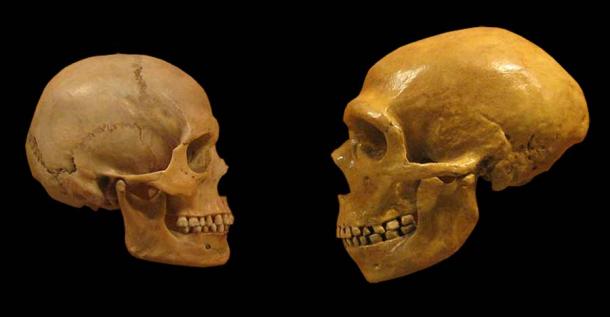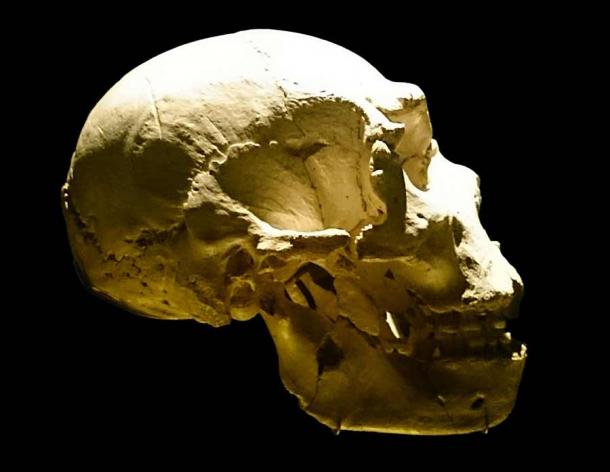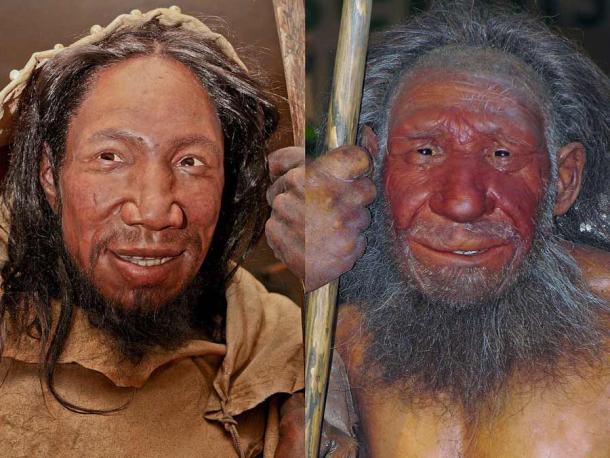There is a question that has puzzled paleoanthropologists for decades. Could Neanderthals produce and understand the equivalent of human speech? Were Neanderthals verbally and linguistically capable, just like their cousins Homo sapiens?
After many years of research, it seems this riddle may now have been solved. According to a team of multidisciplinary researchers affiliated with the University of Alcalá and Complutense University of Madrid in Spain and Binghamton University in New York, Neanderthal speech capabilities were considerable and based on all the necessary physical characteristics to speak and understand speech.
In the latest edition of Nature Ecology & Evolution , the scientists explain the results of their study, which used data they obtained from a fossil-based reconstruction of the Neanderthal auditory system. After careful analysis, they were able to confirm that Neanderthal speech did indeed have the physiological characteristics that would be required to produce and understand a full spectrum of sound combinations.
“We don’t know if they had a language, but at least they had all the anatomical parts needed to have the kind of speech that we have,” said Mercedes Conde-Valverde , a paleoanthropologist at the University of Alcalá and the study’s lead author. “It’s not that they had the same language, not English, not Spanish, nothing like this. But if we could hear them, we would recognize that they were humans.”

A Homo sapiens skull (left) and a Neanderthal skull: different but also extremely similar when it came to speech capabilities. (hairymuseummatt (original photo), DrMikeBaxter (derivative work) / CC BY-SA 2.0 )
Using Technology To Confirm Neanderthal Speech Capability
For the purposes of their analysis, the scientists used sophisticated medical imaging software to make accurate three-dimensional models of the Neanderthal auditory system, using results obtained from CT scans of fossil skulls . Understanding what Neanderthals could hear is key to understanding what they could say, and the images obtained using this high-tech approach revealed that Neanderthal hearing capacities were sharply attuned to the sounds associated with human speech.
As a control, the research team used the same technique to build virtual fossil-based reconstructions of the auditory capacities of Sima de los Huesos hominins, another long-extinct primate that has been identified as the most immediate ancestor of the Neanderthals. Notably, the anatomical characteristics required to hear and distinguish human-like speech was lacking in this species, making it clear that such a refined auditory structure was not so common.

A Sima de los Huesos skull (pictured here) was also created for the study using a virtual fossil-based reconstruction. The study concluded that this species could not “hear” sounds like Neanderthals could. (UtaUtaNapishtim / CC BY-SA 4.0 )
With an accurate representation of the Neanderthal ear cavity architecture in hand, the scientists were able to evaluate the Neanderthal’s capacity to detect sounds that oscillate at a frequency of up to 5,000 cycles (or five kilohertz) per second. In comparison to the Sima de los Huesos people, Neanderthals were better equipped to detect and distinguish sounds in the four-to-five kilohertz range, putting them on par with modern humans.
The researchers were also able to calculate the frequency range , or bandwidth, of the sounds that Neanderthals had the ability to hear and comprehend. Verbal communication requires a relatively large bandwidth, since the acoustic signals of a typical language are produced at widely varying frequencies. Once again, the results for Neanderthal speech showed a relative equivalency with modern humans, as well as better hearing capacity compared to their immediate primate ancestors.
Past studies of theoretical Neanderthal speech focused on their anatomical ability to produce vowel sounds . What this new study revealed, however, was something quite different.
Neanderthal hearing was particularly tuned to detect sounds associated with consonants, the added elements that can convert simple “oohs,” “aahs,” and “uuhs” into more complex, meaningful words. Study author Conde-Valverde identified the “s,” “k,” “t,” and “th” sounds as among those that Neanderthals could hear distinctly.
“Most previous studies of Neanderthal speech capacities focused on their ability to produce the main vowels in English spoken language,” explained Rolf Quam , a Binghamton University anthropology professor and participant in the study. “However, we feel this emphasis is misplaced, since the use of consonants is a way to include more information in the vocal signal and it also separates human speech and language from the communication patterns in nearly all other primates.”
In other words, this discovery is highly suggestive, since it identifies an ability found exclusively in Neanderthals and Homo sapiens, the primate cousins who were apparently unique in their ability to produce and comprehend the multi-syllable sounds associated with an authentic language .

A modern human (left) and a Neanderthal (right). They look quite similar and now, based on the latest study, we know Neanderthal speech capabilities were not too different from those of modern humans. (Daniela Hitzemann (left photograph), Stefan Scheer (right photograph) / unknown (reconstructions) / CC BY-SA 4.0 )
Neanderthal Speech Capability Makes Them “Equal” To Humans
Fossil studies have established that Neanderthals possessed the anatomical tools required to make and hear all or most of the sounds used in language. Studies of their skulls also revealed that their heads were large enough to house brains that were similar in size to those of modern humans.
Of course, these facts alone don’t prove that Neanderthals had the cognitive skills and abilities required to construct languages, as the authors of the Nature Ecology & Evolution study fully admit.
However, other evidence relating to Neanderthal culture, society, and technology strongly suggests that they would have had the mental capacity needed to create and disseminate an understandable language.
Excavations of Neanderthal sites have revealed that these extinct cousins of modern humans created and used a range of stone tools , made jewelry that they apparently wore for decorative purposes, left behind cave art that revealed valuable data about their lifestyles and thinking processes, reverently buried their dead, and often managed to survive in harsh or marginal climates that would have severely tested their ingenuity and adaptability.
All of this behavior implies significant intelligence, of the practical, abstract, and symbolic kind. Exactly the type of intelligence that would be expected in a species that created and used language.
Is this enough to end the debate over whether Neanderthals had a language or languages? At least one expert thinks so.
“These results are particularly gratifying,” said University of Alcalá paleontologist Ignacio Martinez, a colleague of Conde-Valverde and another esteemed study participant. “We believe, after more than a century of research into the question, that we have provided a conclusive answer to the question of Neanderthal speech capacities.”
The full report is available from Nature, DOI: 10.1038/s41559-021-01391-6
Top image: A 3D model and virtual reconstruction of the ear in a modern human (left) and a Neanderthal (right), which was used to determine Neanderthal hearing and speech capacities. Source: Mercedes Conde-Valverde / Nature Ecology & Evolution
By Nathan Falde
Related posts:
Views: 0
 RSS Feed
RSS Feed

















 March 2nd, 2021
March 2nd, 2021  Awake Goy
Awake Goy  Posted in
Posted in  Tags:
Tags: 
















